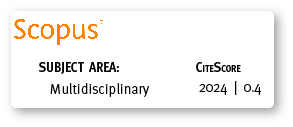Prevalencia del síndrome Meares-Irlen/Estrés Visual que afecta la lectura en niños de tercer grado
DOI:
https://doi.org/10.18537/mskn.06.01.06Palabras clave:
distorsiones visuales perceptuales, malestares físicos al ller, lectura, educación básica, síndrome Meares-Irlen, estrés visualResumen
El presente estudio planteó determinar la prevalencia del Síndrome Meares-Irlen/Estrés Visual, e identificar las molestias físicas y perceptuales más comunes que afecta la lectura en los niños/as del tercer grado, escuelas públicas y privadas, área urbana de Cuenca. Dos cientos sesenta y siete estudiantes de tercero de educación básica, directores, padres de familia y los profesores de aula participaron en este estudio. Los escolares fueron evaluados a través de observaciones, entrevistas y la aplicación de cinco pruebas de la EPLI®. La Prevalencia del MISViS es del 25.84%, rango severo en la población estudiantil del tercer grado el cual posiblemente impide el normal desarrollo de la lectura. Los malestares físicos al leer fueron: i) acercarse o alejarse de la página (19.17%); ii) molestias al leer bajo luces fluorescentes (18.05%); iii) parpadeo muy seguido (14.66%); iv) dolor/ardor de los ojos mientras leen (12.78%). Dentro de las distorsiones visuales perceptuales se identificaron: i) necesidad de utilizar el dedo o algún marcador mientras leen (37.59%); ii) leer lentamente o con pausas repetidas (33.08%); iii) hacer esfuerzo para mantenerse enfocado en lo que leen, (28.95%); iv) evitar leer o leer en voz alta (27.89%); v) problemas para recordar lo que se lee (19.92%); entre otros. Se concluyó que la prevalencia del Síndrome Meares-Irlen/Estrés Visual es del 25.84% en el rango severo; igualmente se identificaron distorsiones visuales perceptuales y malestares físicos al leer más comunes en este grupo de estudio.
Descargas
Métricas
Citas
Alder, L., M. Atwood, 1987. Poor readers: What do they really see on the page? A study of a major cause of dyslexia. Los Angeles CA: Los Angeles County Office of Education.
Andrade, P., 2011. Estrategias metodológicas activas para la enseñanza y aprendizaje de la lectoescritura en niños/as con capacidades especiales distintas en la Escuela Manuela Cañizares de Cotacachi. Tesis de Postgrado, Universidad Tecnológica Equinoccial, Quito,Ecuador. Disponible en http://repositorio.ute.edu.ec/handle/123456789/10256.
Bernal, M., 2011. Validación del método Irlen en escolares de 6 a 8 años, con trastornos de lectura. Tesis de pregrado, Facultad de Psicología, Universidad de Cuenca, 167 pp. Disponible en http://dspace.ucuenca.edu.ec/handle/123456789/2213.
Hoover, H.D., S.B. Dunbar, D.A. Frisbie, 2007. Iowa Tests of Basic Skills (ITBS). Forms A, B and C. Riverside Publishing: Ed. Houghton Mifflin Harcourt.
Irlen, H.,1983. Successful treatement of learning disabilities. Paper presented at the 91st annual Convention of the American Psychological Association, Anaheim, CA.
Irlen, H., M.J. Lass, 1989. Improving reading problems due to symptoms of scotopic sensitivity síndrome using Irlen Lenses and overlays. Education, 109(4), 413-417.
Johnson, P.J., G. Saba, E. Dorain, S. Belmont, 2000. A study to test the effectiveness of reading with Irlen coloured overlays for students with Irlen/Scotopic sensitivity syndrome. Paper presented at the 6th Irlen International Conference, Australia.
Jordan, D.R., 1972. Dyslexia in the classroom. Chicago, Illinois: Bell & Howell Co.
Kruck, R., Sumbler, K., Willows, D., 2008. Visual processing of children with Meares-Irlen syndrome. Ophthalmic Physiol. Opt., 28(1), 35-46.
Kupfer, D., D. Regier, 2013.Diagnostic and Statistical Manual of Mental Disorders. DSM-5 Task Force. Disponible en http://www.dsm5.org/Documents/ADHD%20Fact%20Sheet.pdf.
Lovegrove, W., 1984. Dyslexia and the visual factor. Education News, 19, 15-18.
MacGinitie, W.H., R.K. MacGinitie, K.M.L.G. Dreyer, K.E. Hughes, 2000. Gates-MacGinitie Reading Tests (GMRT®, 4th ed.). Riverside Publishing: Ed. Houghton Mifflin Harcourt.
Miller, L.,1985. Scotopic sensitivity and reading disability. M.A. Thesis. California State University.
Olitsky, S.E., L.B. Nelson, 2003. Reading disorders in children. Pediatr. Clin. North Am., 50(1), 213-224.
Orton, S.T., 1925. World-blindness in school children. AMA Arch. Neuro. Psychiatry, 14(5), 581-615.
Robinson, G.L., B.R. Hopkins, T. Davies, 1995. The incidence of symptoms of Scotopic Sensitivity Syndrome in secondary school populations: A preliminary study. Bull. Learn. Disabil., 5, 36-56.
Robinson, G.L., J. Miles, 1987. The use of colored overlays to improve visual processing: A preliminary survey. Except. Child, 34(1), 65-70.
Scheiman, M., P. Blaskey, E.B. Ciner, M. Gallaway, M. Parisi, K. Pollack, R. Selznick, 1990. Vision characteristics of individuals identified as Irlen filter candidates. J. Am. Optom. Assoc., 61(8), 600-5.
Stein, J., S. Fowler,1985. Effect of monocular occlusion on viso-motor perception and reading in dyslexic children. Lancet, 2(8446), 69-73.
Stuart, J.R., S. Della Sala, R. McIntosh, 2011. Irlen colored overlays do not alleviate reading difficulties. Pediatrics, 128(4), e932-8.
Whithing, P., 1985. How difficult can reading be? New insight into reading problems. The Teaching of English. J. English Teachers Assoc., 49, 49-55
Descargas
Publicado
Cómo citar
Número
Sección
Licencia
Copyright © Autors. Creative Commons Attribution 4.0 License para cualquier artículo enviado a partir del 6 de junio de 2017. Para los manuscritos presentados anteriormente, se utilizó la licencia CC BY 3.0.
![]()
Usted es libre de:
 |
Compartir — compartir y redistribuir el material publicado en cualquier medio o formato. |
 |
Adaptar — combinar, transformar y construir sobre el material para cualquier propósito, incluso comercialmente. |
Bajo las siguientes condiciones:
 |
Atribución — Debe otorgar el crédito correspondiente, proporcionar un enlace a la licencia e indicar si se realizaron cambios. Puede hacerlo de cualquier manera razonable, pero de ninguna manera que sugiera que el licenciador lo respalda a usted o a su uso. |
| Sin restricciones adicionales: no puede aplicar términos legales o medidas tecnológicas que restrinjan legalmente a otros a hacer cualquier cosa que permita la licencia. |
Mayor información sobre este acuerdo de autoría y licencia, transferencia de derechos o solicitudes de reproducción, pueden ser consultados en este enlace.









